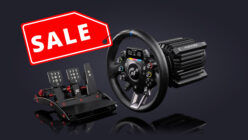Just as it did with the PlayStation 5, ahead of its launch, Sony has shown off the design and technology of the new PlayStation VR2 unit with a pair of intriguing teardown videos.
The videos, each presented by a member of the PSVR2’s design team, reveal just about everything about the new device short of pulling the computer chips off their circuit boards. One deals with the headset itself, with the other looking at the new Sense controllers.
With a stern warning at the beginning that doing this to your own PSVR2, when it arrives on February 22, will invalidate the guarantee, Takamasa Araki from the mechanical design team starts the laborious process of taking the headset to pieces.
It starts with the rubberized light shield, which has been designed to keep all outside light out, with Sony researching different face and nose sizes and shapes to make this piece as useful as possible. Interestingly Araki notes it can be cleaned with water once it has been removed, so this is perhaps an item users are supposed to take off regularly; it’s certainly the least involved piece to remove.
After that Araki demonstrates the intricacy with which the headset has been put together and a fascinating array of acrylic jigs for holding the device in place as he disassembles it. The video shows off the symmetrical interior design — “beautiful both inside and out” — as well as touches like the cooling ducts to keep the wearer comfortable and cool the main processor, the tiny IR cameras for controller tracking, and how the units are sealed to prevent dust and dirt ingress.
A shorter, five-minute video looks at the Sense controller, designed by Takeshi Igarashi who also designed the PlayStation 5’s DualSense.
Igarishi shows that the outer shield of the controllers is made from a material that allows the infra-red LEDs — 14 of them, in a ring-shaped assembly beneath — to pass through and be detected by the headset camera. He also demonstrates the capacitive touch sensors on the controller, with five on each device for the finger trigger, grip button, action buttons, and stick.
Like the DualSense, the Sense has haptic feedback units. They’re slightly smaller in this application, designed to fit into the narrower grips. There’s adaptive triggers too, which Igarashi shows in action.
The videos show why the PlayStation VR2 comes in at a heady $549.99 (€599.99/£529.99), even if our own experience of how the device transforms Gran Turismo 7 didn’t already! It’ll launch on February 22, just one week from today.
See more articles on PlayStation VR.










